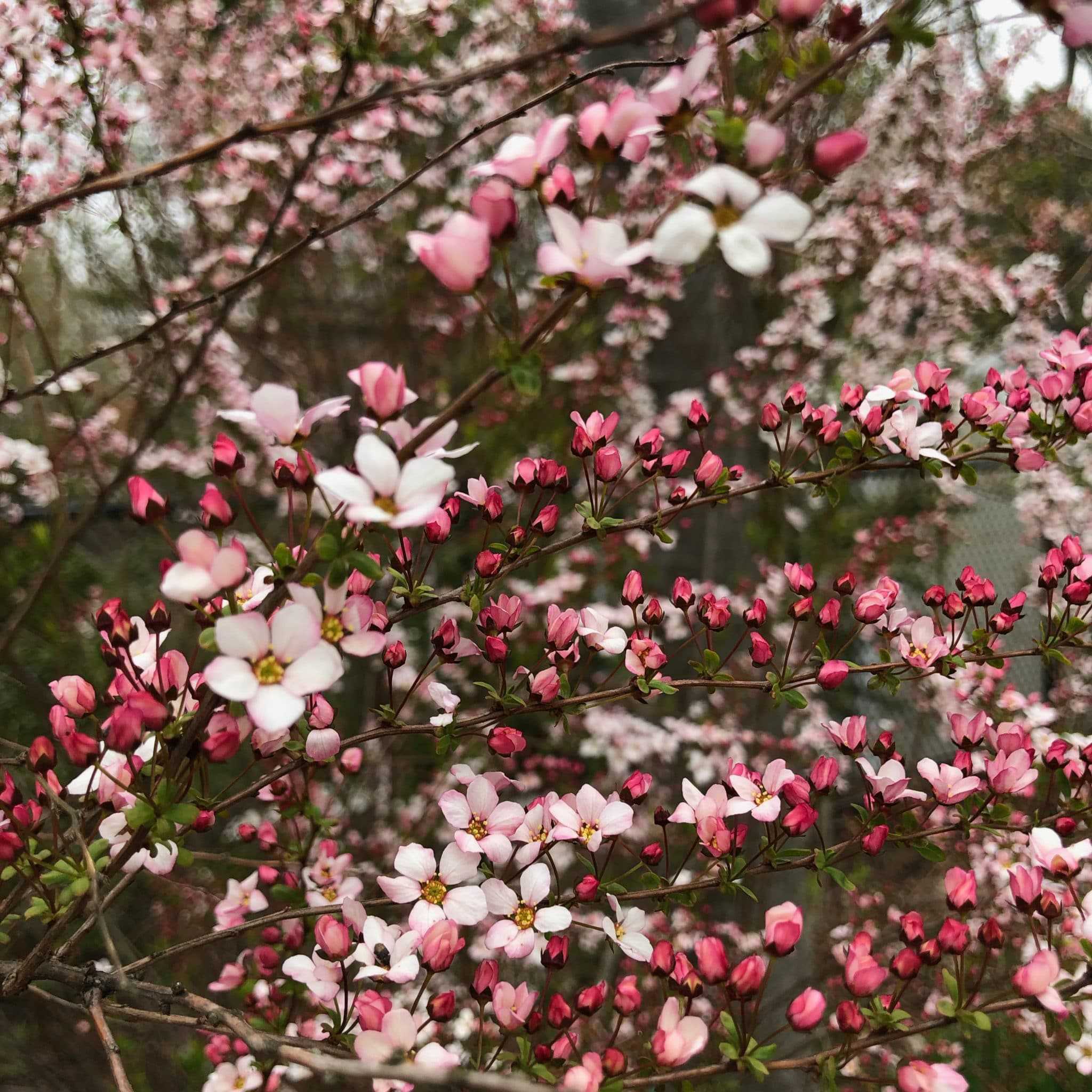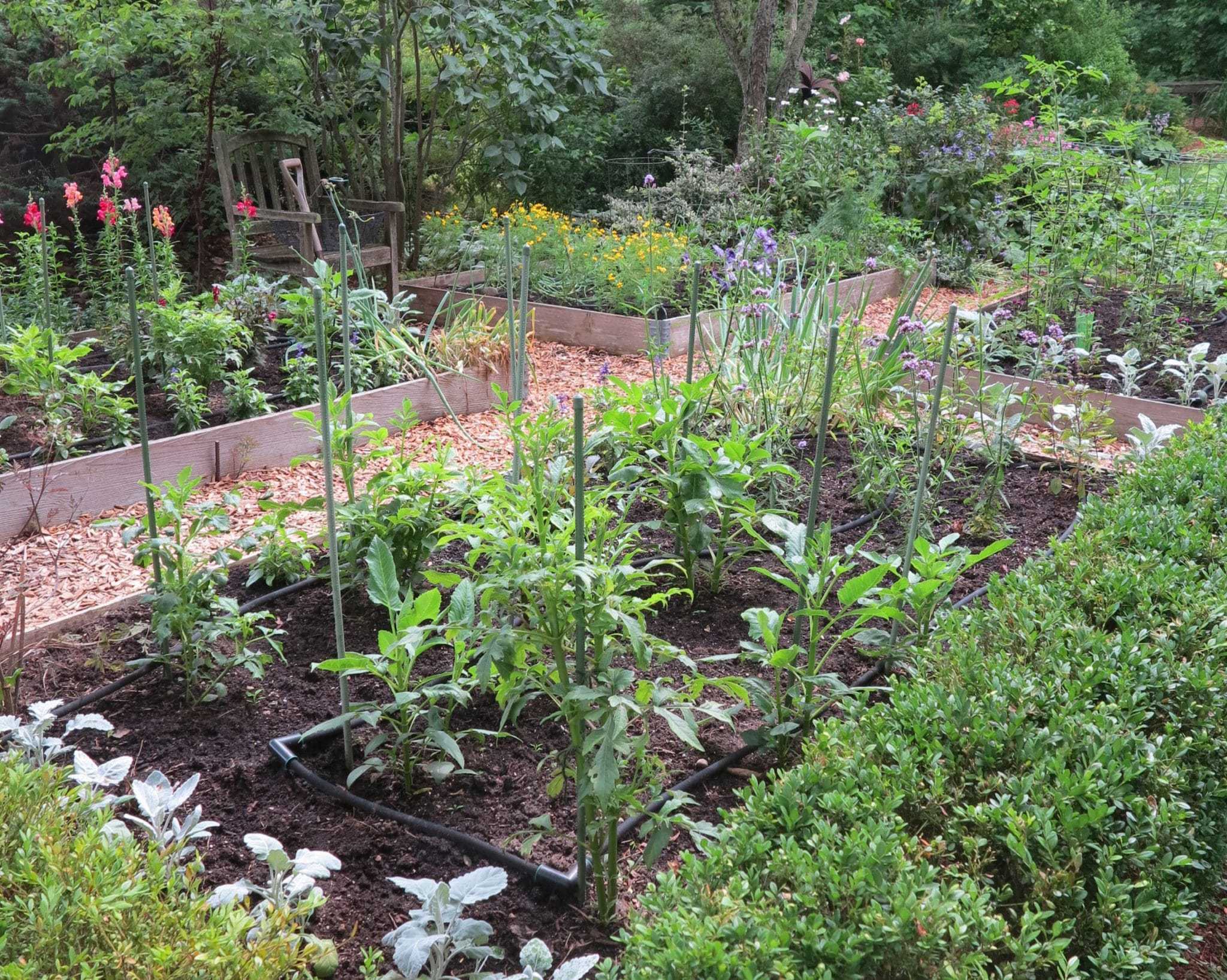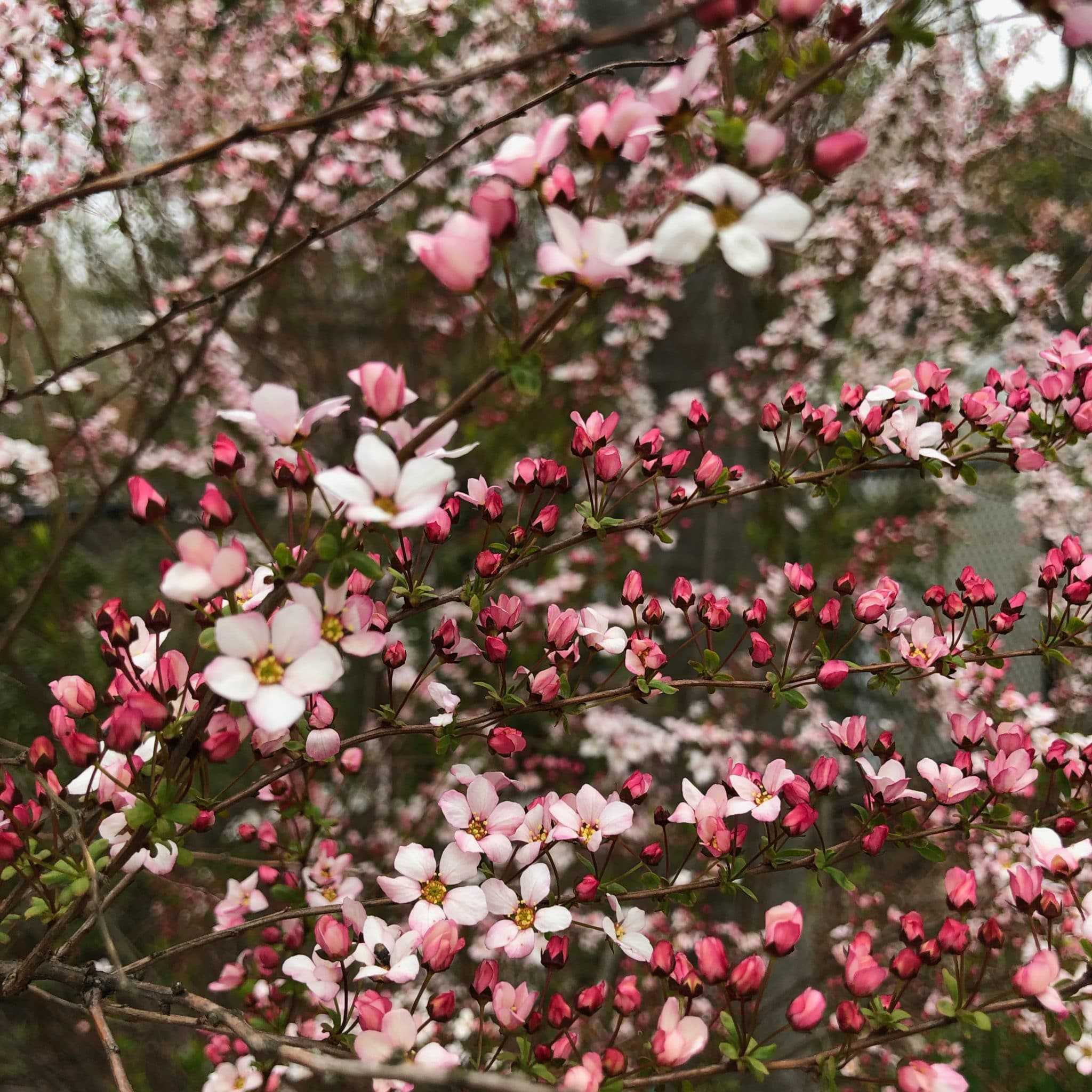Spireas are generally bulletproof shrubs, easily found at most garden centres. Many of us are familiar with the ubiquitous bridal wreath variety (Spiraea x vanhouttei), blooming in early June. New cultivars of Japanese spirea (S. japonica) are popular, too. “There’s something about spirea” describes some of the best varieties of these compact, long-blooming shrubs.

I like them all, but my favourite is the early-blooming ‘Fujino Pink’ Thunberg spirea (S. thunbergii ‘Fujino’), with its long, gracefully arching stems, each one speckled with small rosy buds that open to pale pink, five-petaled blooms. It’s not as easy to find as the others, but worth the search. Occasional pruning prevents specimens from getting too leggy and scraggly; they eventually reach about five feet (1.5 m). ‘Fujino Pink’ may not look like much when not in bloom, but that’s okay. Right now, I see a cluster of pink wands, waving in better days in the garden.
Praise for raised beds
For those of you starting a vegetable garden or expanding one you already have, might I suggest a raised bed? Their benefits are numerous. Soil is easy to improve and warms up earlier in the spring. Drainage is good. There’s no need to provide access between rows — just reach across the bed to harvest or weed. Finally, a raised bed’s defined boundaries provide a sense of orderliness and purpose to what can sometimes be a sprawling enterprise.
When we moved to our current garden (it came with a house, too) almost 18 years ago, we installed four 10 by 5 foot (3 by 1.5 m) raised beds using 1 foot x 8 inch untreated cedar boards and metal corner brackets. The boards have needed to be replaced once. This area is my horticultural playground—a joy. In the beginning, mostly cut flowers filled the beds, but now it’s a 50-50 mix of dahlias, vegetables and herbs. Nothing grand or exotic; totally manageable and always an experiment.

Raised beds are perfect for gardeners with less than ideal growing conditions and limited space, too. Raised Bed Revolution, by Tara Nolan, is an excellent book for experienced and less-experienced gardeners, filled with building projects and planting ideas.
Planning a vegetable garden
Deciding what vegetables to grow, how much to plant and where your plants will be happy are just a few of the questions new vegetable gardeners might have. “How to plan a vegetable garden” covers choosing a site, preparing the soil, planting and staking, and feeding and watering. Included are recommendations for seven easy-to-grow vegetables.
Setting a good example
They could have sold the 25 acres to a developer. Instead, the Sisters of St. Joseph in New Orleans decided to help create one of the country’s largest urban wetlands to manage stormwater and ease the workload of the city’s current drainage system.

